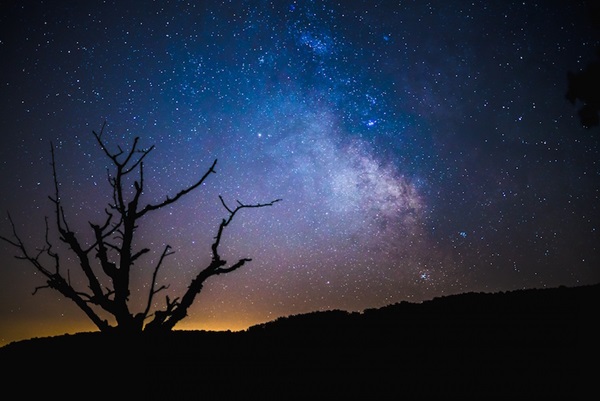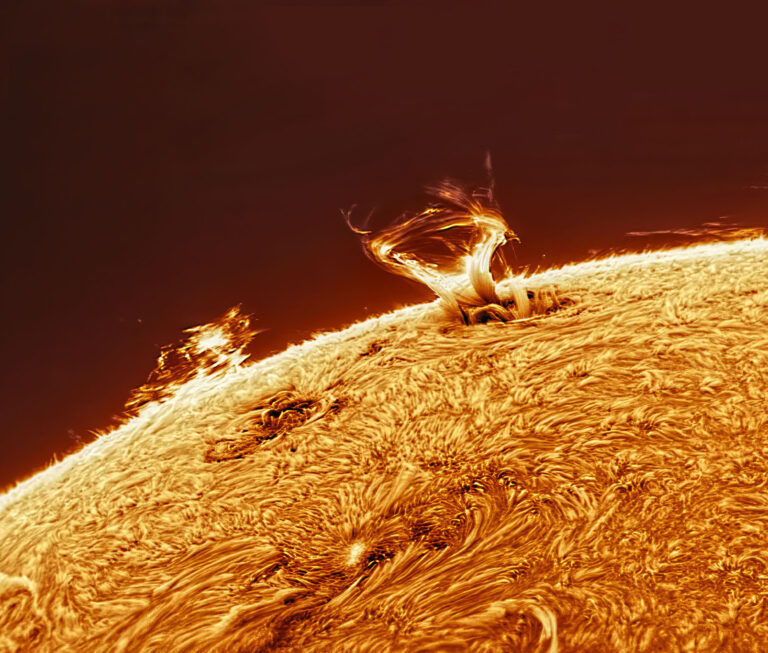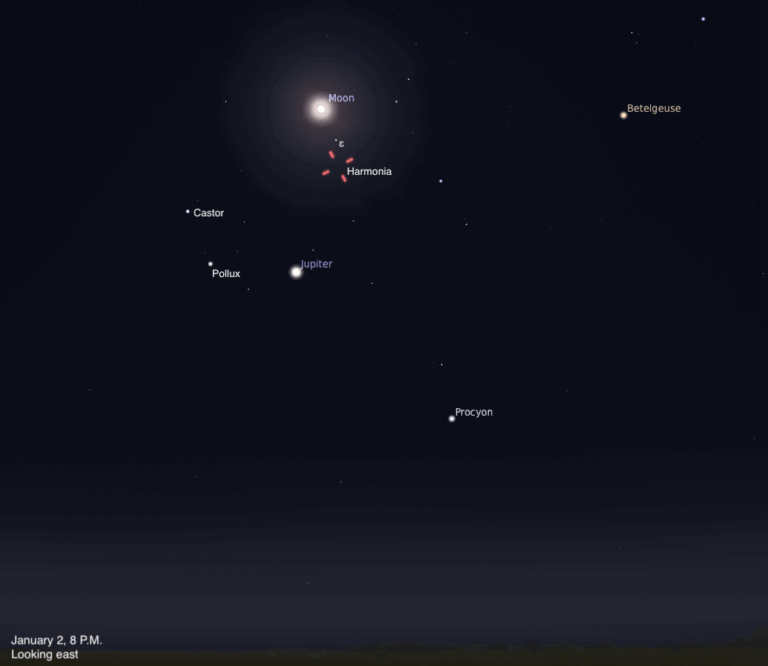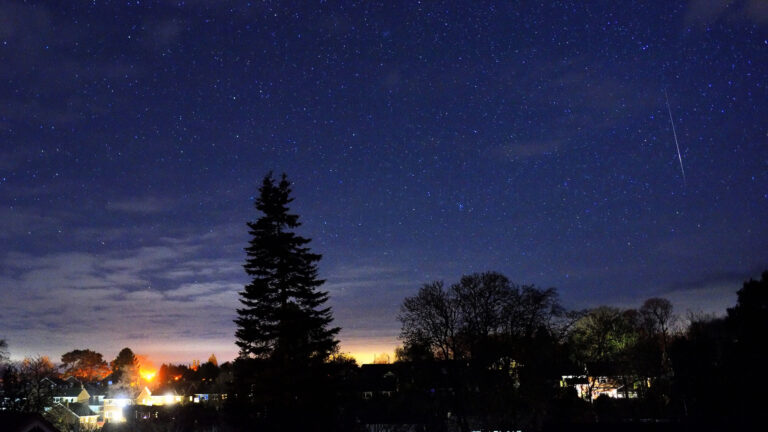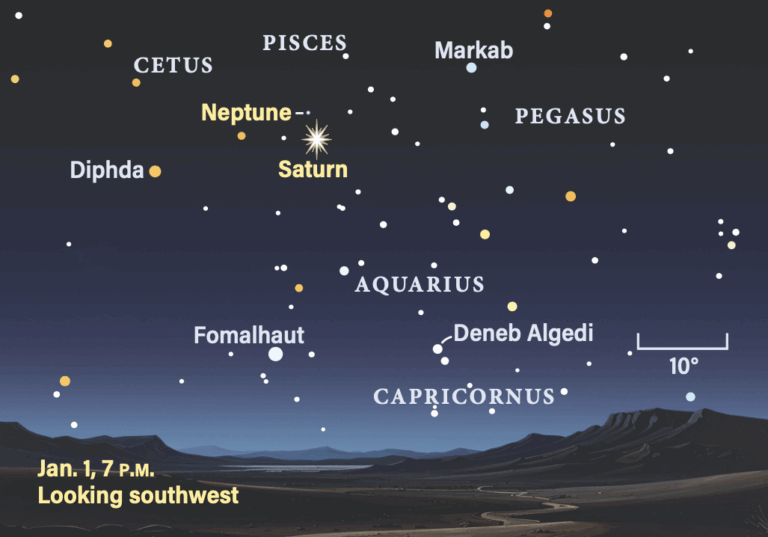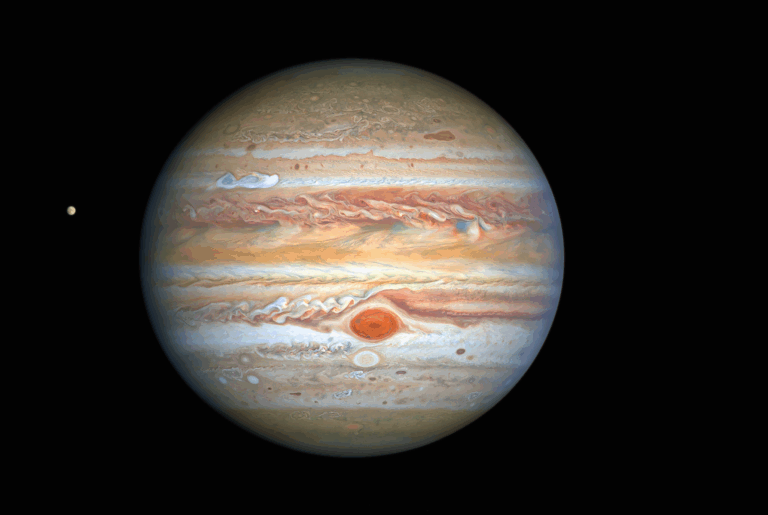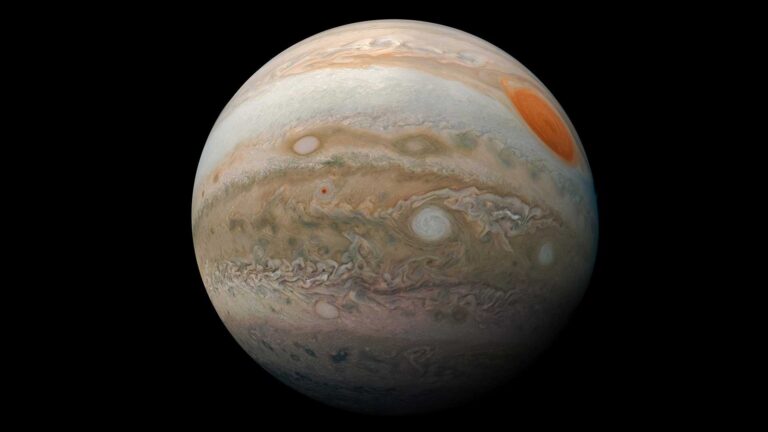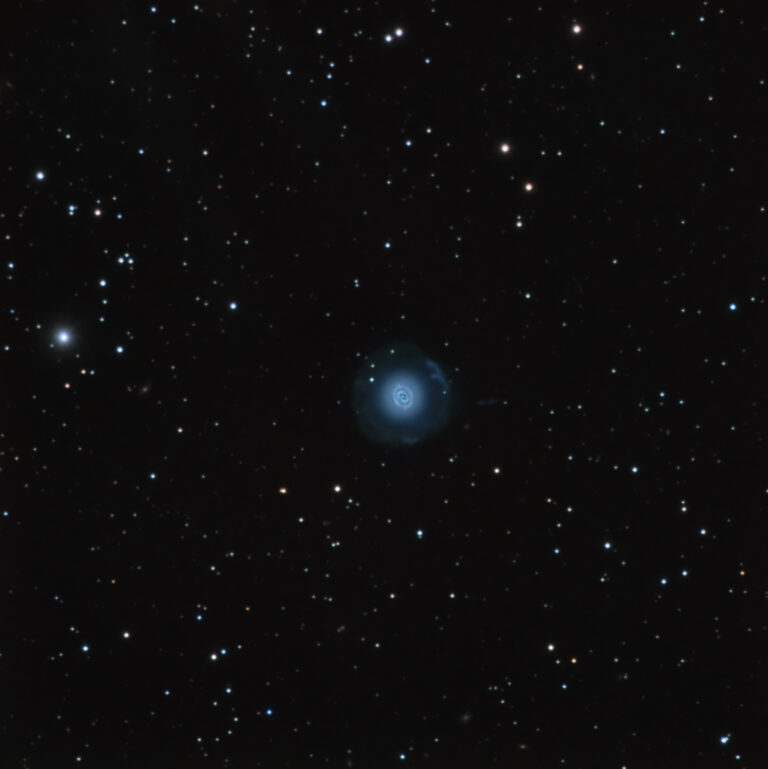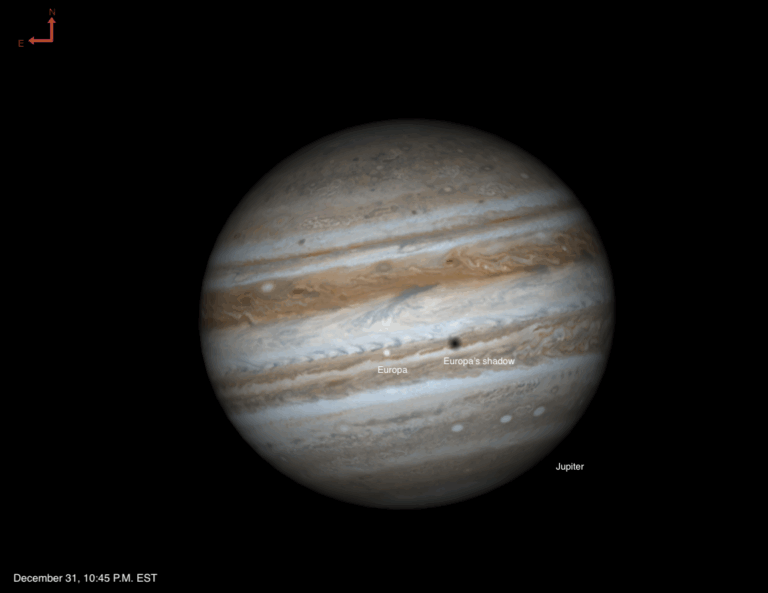Key Takeaways:
Uranus reached opposition and peak visibility three months ago today, but it remains a tempting target. The outer planet appears nearly two-thirds of the way to the zenith in the southern sky as darkness falls. The magnitude 5.8 world lies in southeastern Pisces, 3.5° west of the 4th-magnitude star Omicron (ο) Piscium. Although Uranus shines brightly enough to glimpse with the naked eye under a dark sky, binoculars make the task much easier. A telescope reveals the planet’s blue-green disk, which spans 3.5″.
Saturday, January 20
Two of the finest deep-sky objects shine prominently on January evenings. The Pleiades and Hyades star clusters appear highest in the south in early evening but remain conspicuous until well past midnight. The Pleiades, also known at the Seven Sisters and M45, looks like a small dipper to the naked eye. The larger Hyades forms the V-shaped head of Taurus the Bull. Although both look nice without optical aid, binoculars show them best.
Sunday, January 21
Saturn passed on the opposite side of the Sun from Earth exactly one month ago, but it already appears low in the southeast during morning twilight. From mid-northern latitudes, the ringed planet lies nearly 10° above the horizon an hour before sunrise. It shines at magnitude 0.5, which makes it the brightest point of light in this part of the sky.
Monday, January 22
Grab your binoculars or telescope and hunt down asteroid 20 Massalia this week. The 9th-magnitude minor planet lies among the background stars of eastern Taurus and climbs highest in the south around 9 p.m. local time. Start at 3rd-magnitude Zeta (ζ) Tauri, the star that marks the tip of the Bull’s southern horn. After taking a quick look at the Crab Nebula (M1) 1° to the northwest, slide 1.6° farther west to find 5th-magnitude 114 Tau. Massalia currently lies 1.1° west of this star and only 0.4° southwest of 6th-magnitude 108 Tau. The asteroid remains nearly stationary relative to this backdrop all week.
Head outside before dawn and you can’t miss Jupiter. The giant planet rises around 2 a.m. local time and climbs 30° high in the south-southeast by the time twilight commences. Jupiter shines at magnitude –1.9, which makes it the brightest point of light in the night sky, and resides among the much dimmer stars of the constellation Libra. A telescope reveals the planet’s 35″-diameter disk.
Wednesday, January 24
You can find the half-lit Moon high in the south as darkness falls, then watch as it sinks toward the western horizon throughout the evening hours. Our satellite officially reaches its First Quarter phase at 5:20 p.m. EST. The Moon spends the evening among the background stars of northern Cetus the Whale.
Thursday, January 25
A pair of fine binocular objects are on display during evenings this week. The open star clusters M46 and M47 reside about a degree apart in the northwestern corner of the constellation Puppis the Stern. The two lie about 12° east-northeast of the sky’s brightest star, Sirius. The western cluster, M47, glows at 4th magnitude and appears as a fuzzy patch sprinkled with several pinpoint stars. Sixth-magnitude M46 shows up as a hazy collection of faint stars that is hard to resolve under most conditions. Although it contains nearly twice as many stars as M47, M46 appears fainter and fuzzier because it lies some three times farther from Earth.
Friday, January 26
The waxing gibbous Moon slides eastward through Taurus tonight. Once darkness falls across North America, you can see the lovely Hyades star cluster perched just east of Earth’s satellite. As the night wears on, the Moon moves into the V-shaped Hyades and approaches 1st-magnitude Aldebaran. (Although this star appears to belong to the cluster, it lies only half as far away.) From the northwestern United States and western Canada, the Moon passes directly in front of the star just before the pair sets.
The brightest star in the night sky puts on a nice show January evenings. Gleaming at magnitude –1.5, Sirius shines nearly four times brighter than the next brightest star visible from mid-northern latitudes: Arcturus in the constellation Boötes. Sirius rises around 5:30 p.m. local time and ascends in the southeast throughout the evening hours.
Sunday, January 28
Mars stands out in the southeastern sky before dawn this week. The magnitude 1.2 Red Planet rises before 3 a.m. local time and appears 25° high as twilight starts to paint the sky. It currently resides among the background stars of eastern Libra, some 10° east of brilliant Jupiter. Unfortunately, the view of Mars through a telescope proves disappointing — its disk spans only 5″ and shows no detail.

